2015 Fairway Wood and Hybrid Roundup: An AmateurGolf.com Staff Review
1/25/2015 | by Rusty Cage
see also: Equipment Reviews
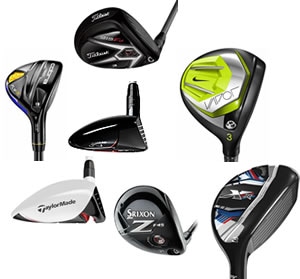
Faster, stronger and longer. Key innovations in face technology and adjustability fuel this year's fairway woods and hybrids.
What’s new for fairway wood and hybrid innovation in 2015? How about even more adjustability, performance and forgiveness. Not to mention the biggest innovation of all - faster, hotter faces as noted in this year’s Golf Digest’s Hot List. But if my conversations with representatives from Titleist revealed one thing that I would use to describe how a modern fairway wood or hybrid differs from products released even just a few years ago it would have to be versatility.
Adjusting how a fairway wood or hybrid flights a ball may start with dialing in loft and face angle settings, but it certainly doesn’t end there. Each manufacturer, including Titleist, has unveiled clubs that experiment with the placement of center of gravity, feature adjustable weight ports and use faster, thinner face material that flexes at impact. Even something as simple as the size and shape of the club head can alter how a fairway wood or hybrid launches a ball and the amount of spin it imparts. Some players need more spin, some need less. Some players want to play fairway woods or hybrids that launch the ball higher and are better able to land the ball soft on the greens. Others want the opposite. Today’s fairway woods and hybrids are versatile enough to help every golfer shoot lower scores.
Titleist 915 Fairway Woods and Hybrids
Using the same Active Recoil Channel technology found in their drivers, the Titleist 915 fairway woods and hybrids feature a hollowed out channel in the sole to lower spin and add ball speed on all shots. All clubs in this category have newer, hotter faces than their predecessors.
Titleist has two fairway wood models - the 915F and 915Fd. The 915F has a slighter larger head volume than the 915Fd and the differences in size and shape are most noticeable when comparing the two clubs side-by-side at address. Although both clubs have been designed to reduce spin, the 915Fd is a better option for players seeking a lower, more penetrating ball flight.
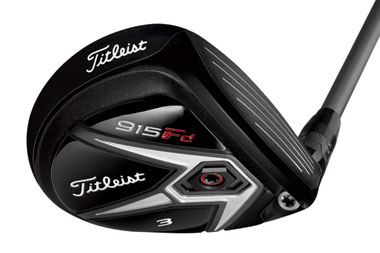
Likewise, the 915H and 915Hd hybrids from Titleist have similar technologies and characteristics. Both hybrids average between 150 and 250 rpm less spin and carry about six yards farther compared to the 913 lineup according to testing conducted by Titleist. The 915H is designed to get the ball up a little higher than the 915Hd. Both hybrids have a pronounced Active Recoil Channel, but the location and the thickness differs slightly when compared to the fairway woods.
Callaway Fairway Woods and Hybrids
Callaway has two distinguished families of fairway woods and hybrids - the Big Bertha Alpha 815 and XR series.
The Big Bertha Alpha 815 fairway woods are notable for having two adjustable weights in the sole (3 grams and 30 grams) that let you configure launch conditions and help extend the club’s versatility. Compared to the XR line, the Alpha 815 fairways have a more compact head shape which appeals to better players. A forged Hyper Speed Face Cup creates better ball speed on all shots across the face. The Alpha 815 hybrids have the same Hyper Speed Face Cup technology, an adjustable hosel and a low, forward center of gravity that will flight the ball down and reduce spin.
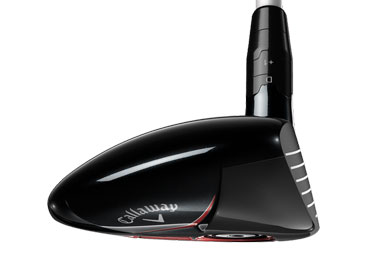
Like the Big Bertha Alpha 815 models, the XR series of fairway woods and hybrids have similar face cup technology to increase ball speed on impact. The fairway woods have a flatter leading edge and a higher toe. The face hight is shallower compared to the X2 Hot clubs from Callaway. The redesigned head shape in the hybrid repositions weight to lower the center of gravity 46% less than the X2 Hot. Both the Alpha 815 and XR woods and hybrids have a black crown, but the XR models have a matte finish that reduces glare and gives off the impression of a very clean, compact profile at address.
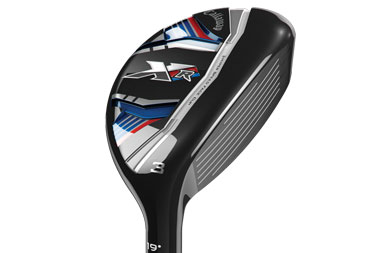
In testing both sets of fairway woods and hybrids I found the Alpha 815 line to be plenty forgiving for a tour-inspired shape. In fact both the XR and Alpha families were extremely easy to hit and offered the distance you would expect from a Callaway product.
Ping G30 Fairway Woods and Hybrids
Ping has been bringing high performance clubs to the market for decades but there’s probably not enough superlatives to describe the outstanding blend of distance and forgiveness found in the G30 fairway woods and hybrids.
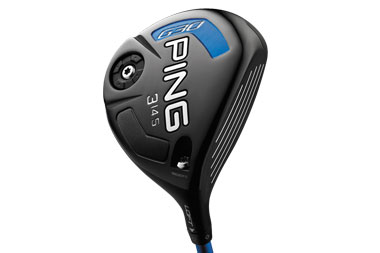
The series of ridges coined Turbulators by Ping are proven to reduce drag and create speed. As a side benefit, they are also useful as an alignment aid when addressing the golf ball. Ping also introduced a hotter, more forgiving Carpenter 475 face that generates distance and control. The G30 hybrid employs a special heat-treatment process resulting in a thinner and stronger face to increase ball velocity. Pair that up with an internal weighting system that emphasizes high MOI and you have a well- engineered hybrid that will let you reach those long approach shots with relative ease.
TaylorMade Fairway Woods and Hybrids
TaylorMade’s R15 fairway woods and hybrids pack a punch for the more accomplished golfer. The Front Track system in the sole of the new fairway woods acts like a speed pocket to propel the golf ball off the face. A 25-gram weight lets you configure the club’s center of gravity as well as adjust the bias for either a fade or draw. The tour-inspired, compact-shaped R15 hybrids have a centrally-located CG position that promotes a neutral ball flight and is paired up with a 3- degree loft sleeve to fine-tune the launch characteristics as needed.
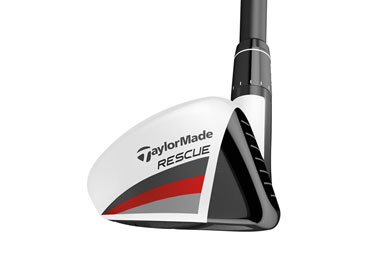
The lighter Aeroburner family of fairway woods and hybrids are great alternative for anyone who isn’t an exact fit for the R15 line, or isn’t looking for all the technological innovations (adjustable hosel and sliding weight). TaylorMade’s Aeroburner fairway woods and hybrids are designed around a very simple philosophy - maximize ball speed - and the aerodynamics support that intent.
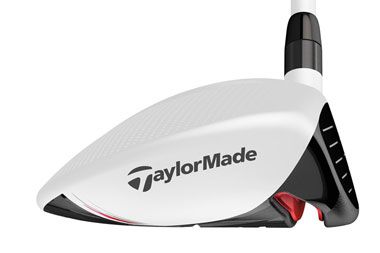
Both the fairway woods and hybrids feature a Speed pocket that increases the size of the sweet spot while reducing spin. A raised crown and new hosel fin work together to improve airflow and deliver more clubhead speed. The white crown on both the fairway woods and hybrids are have a simple alignment aid in the center that spells out Aeroburner. On close inspection it’s easy to see the raised channel and dot pattern that helps reduce drag. Between the R15 and Aeroburner line up, TaylorMade is able to offer fairway woods and hybrids that accommodate a wide range of golfers specifically seeking to maximize their distance.
Nike Vapor Fairway Woods and Hybrids
Nike’s Vapor Speed and Vapor Flex fairway woods and hybrids are built with a number of unique technologies including a reinforced cavity back design, a compression channel and a hotter NexCOR face. The combination of these technologies work together to maximize distance without sacrificing stability and forgiveness. Unlike the Speed line of metal woods and hybrids, the Flex models also include an adjustable hosel (Nike’s FlexLoft 2 system) that allows for five loft and three face angle settings.

My initial impressions of these clubs is that they are as every bit as good as the last year’s Covert 2.0 lineup. They may in fact be fractionally longer, while just as forgiving as their predecessors and that’s never a bad thing. For those golfers who took a pass on the Coverts due to their highly polarizing candy-apple red crown colorway, it’s time to give the more subdued black-crown Vapor lineup a serious look.
Cobra Fly-Z Fairway Woods and Hybrids
Cobra’s philosophy on fairway woods and hybrids is offer something for everyone. The Fly-Z XL fairway wood is their entry-level model, designed to deliver distance with maximum forgiveness for those golfers who need it. The standard-issue Fly-Z fairway has noticeably less offset than the the XL while still retaining a low and back CG placement for increased MOI. It also comes with a high strength steel insert that allows for a larger, thinner face delivering more face flex for faster ball speeds and higher launch. Finally, there’s the Fly-Z+ fairway with a compact head, configurable CG Zone Weighting and Cobra’s MyFly8 adjustable hosel (up to eight settings) to dial in your launch preferences. Both the Fly-Z and Fly-Z+ fairway woods can be purchased in five different colorways (red, blue, black, orange and white).
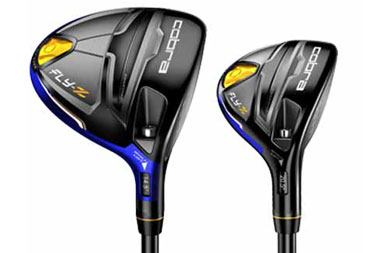
Unlike the fairway woods, Cobra’s hybrids only come in two models: the Fly-Z XL and Fly-Z. The XL is the more forgiving of the two hybrids. It features an offset design, a Speed Channel face that surrounds the club face like a trench to increase ball speed and a low, back CG location for greater MOI. The Fly-Z model still retains the same CG placement, but doesn’t have the same offset design. Like the Fly-Z fairway, the hybrid features the same high strength steel insert, MyFly8 adjustability and is available for purchase in five color options.
Srixon Fairway Woods and Hybrids
The F45 fairway wood and H45 hybrid from Srixon sport a visually clean design that will appeal to those golfers who are attracted to more refined aesthetics. That isn’t to say these clubs lack bells and whistles - they just happen to be located on the inside.
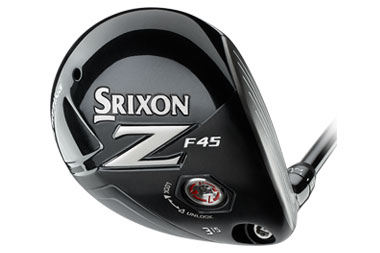
The F45 fairway wood uses what Srixon calls Dual Speed Technology (DST) to maximize a player’s rotational efficiency while delivering more kinetic energy at impact. Translation - more clubhead speed and greater distance. The highly-adjustable F45 uses Srixon’s Quick Tune System to allow golfers to configure loft, lie, face angle and center of gravity (a 7-gram weight comes standard; 3 and 11-gram weights are optional). To maximize ball speed at impact, the F45 fairway wood has a hot steel cup face with a 35% larger sweet spot than in prior generations.
The H45 hybrid has the same variable face thickness and DST technology as in the fairway woods. The center of gravity, while not adjustable, has been configured to promote a higher, more penetrating launch.
Most Popular Articles
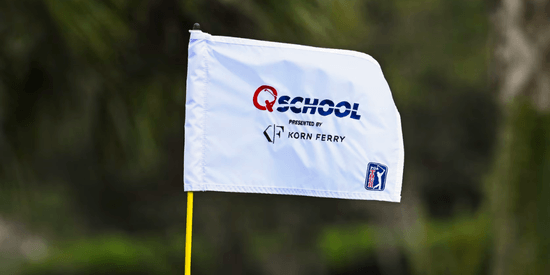
2025 PGA TOUR Q-School Guide: Sites, Scores, and Who Advanced
Dec 5, 2025Second Stage is complete and Final Stage awaits at Sawgrass — follow every Q-School leaderboard and the players still chasing
2025 LPGA TOUR Q-Series: Final Qualifying Stage FINAL SCORING
Dec 8, 2025Helen Briem earns medalist honors, 31 players headed to the LPGA next year
Australian Open at Royal Melbourne: Preview, amateur bios, and how to watch
Nov 30, 2025Rory McIlroy headlines one of the championship's top fields in years - at least four amateurs will have their chance at glory
Luke Ringkamp Cruises to Rolex Tournament of Champions Title at TPC San Antonio
Nov 26, 2025One week after committing to Pepperdine, Luke Ringkamp won the Rolex Tournament of Champions by nine shots.Inside Gil Hanse’s Restoration of Baltusrol’s Upper Course: A Return to Tillinghast’s
Dec 11, 2025Renowned architect Gil Hanse reveals how he brought Baltusrol’s Upper Course back to life by honoring A.W. Tillinghast’s originalLoading latest news...
